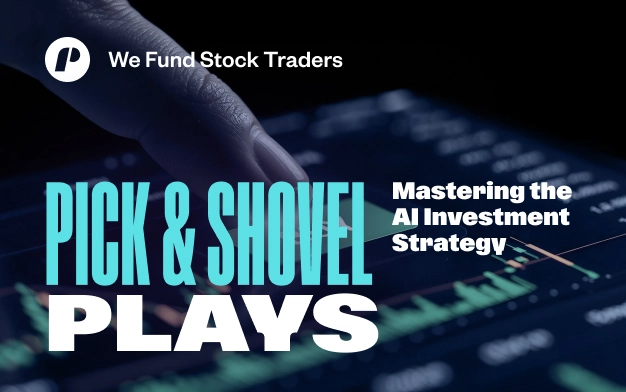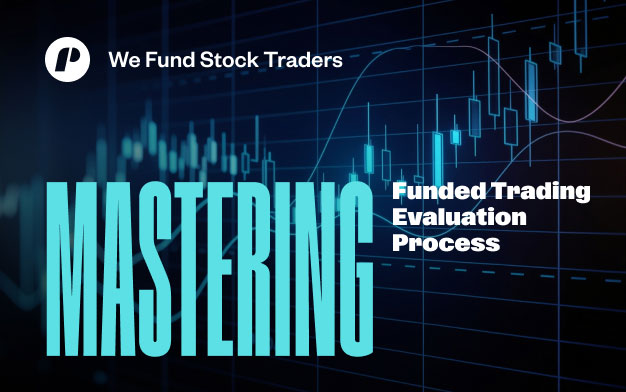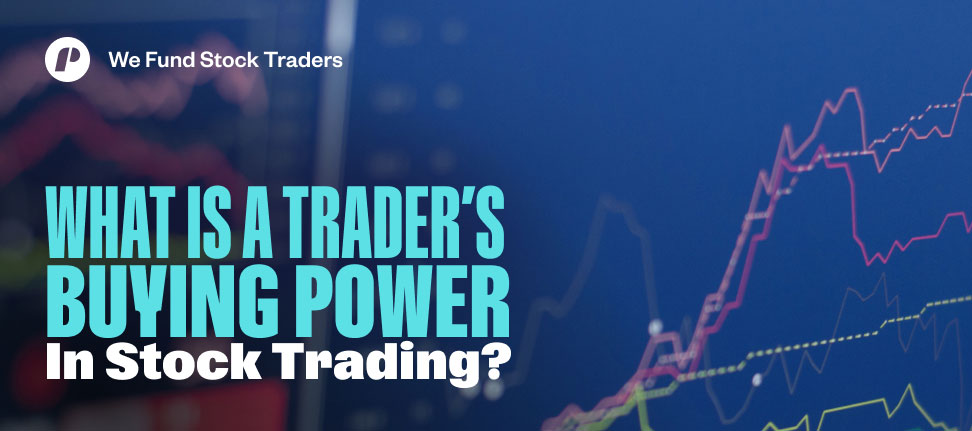
Black, white, red, green. The screens pulse like a living beast; consequently, their colors become a relentless dance. Therefore, you must silence the noise—the talking heads on television weaving tales of market frenzy. Ultimately, what matters is the force behind your trades, the spark that fuels every move. This is, consequently, capital’s highest calling, the unspent fire in your arsenal. You’re asking, What is buying power in stock trading? In the prop firm world, it’s the sacred capital entrusted to you for seizing securities. Indeed, it’s not a borrowed dime, but a covenant of trust, forged by your skill, discipline, and unyielding consistency. As a result, this is your sword, your shield, your power to strike the market’s heart in an instant. In fact, it’s your raw potential to act, right now, in the crucible of opportunity.
Key Notes:
- Forging Trading Capacity
- Immediate Potential
- Taming the Prop Account
- Discipline of Risk
- Beyond Stocks: Buying Power’s Many Faces
The Architect’s Blueprint: Forging Trading Capacity
Every epic quest demands a treasury; consequently, in the dazzling, chaotic cathedral of the stock market, that treasury is Buying Power. That is to say, it’s the maximum capital a trader has to initiate trades across stocks, ETFs, or futures within their proprietary account. To call it a mere number is to miss its essence; as a result, buying power is a living force that shifts in response to your performance, your mastery of risk, and your unique qualities as a trader. Ultimately, its bedrock is your base capital—the sum the firm bestows when you prove your mettle. Thus, this is your battlefield, your canvas of creation. For this reason, with every disciplined trade, every profitable strike, the firm may scale your allocation, doubling or tripling your reach. Therefore, this scale-up is the alchemy of prop trading, transmuting skill into capital’s radiant efficiency.
The Prop Firm’s Covenant
Prop firms, consequently, craft this power through trials of fire. For instance, you face evaluations—profit targets, drawdown limits, consistency gauntlets—to earn your initial capital. As a result, this isn’t a loan; instead, it’s a sacred pact. Thus, the firm entrusts you with their gold, demanding reverence in execution. Consequently, your buying power reflects your ability to navigate the market’s fluctuations while adhering to the firm’s guidelines. Unlike retail traders, you stake no personal coin—instead, only the firm’s capital, which calls for a steward’s devotion. Indeed, every trade is a vow; likewise, every position is a testament to your respect for this entrusted flame.
The evaluation process, therefore, is a forge. For example, a firm might demand a 10% profit over 30 trading days, with losses capped at 5% daily and 10% overall. If you pass, you’re granted $50,000 to wield. Conversely, if you fail, the firm’s gates remain closed. Ultimately, this rigor ensures only the disciplined wield buying power, thereby transforming raw talent into a force that commands the market’s chaos.
Understanding Your Immediate Potential
For a prop trader, buying power, therefore, is your pulse, the rhythm of your market dance. It defines, as a result, your ability to seize fleeting gifts—a sudden stock plunge, an ETF’s undervaluation screaming for action—consequently, those with capital at the ready strike like lightning. However, if you exhaust your allocation too soon, you’re a shadow, watching opportunities fade like smoke. Therefore, buying power is more than a dashboard flicker. Instead, it’s financial preparedness, the freedom to weave through trades, to pivot, and to strike without tripping the firm’s alarms. In the prop trading arena, this awareness shields you from risk breaches and keeps your path to capital scaling ablaze.
Mastering the Art of Buying Power
Mastering this art, therefore, demands cunning. For instance, diversify your positions—spread your capital across tech giants, small-cap rockets, or steady ETFs—to temper risk while chasing glory. In addition, timing is your muse; thus, entering trades at high-probability moments, like a breakout backed by surging volume, preserves your capital for the next strike. Consequently, a trader who allocates 15% of their buying power to a single stock, holding the rest for a market dip, stays fluid and is never sidelined. Ultimately, this discipline ensures you’re always in the game; consequently, your buying power is a beacon for opportunity.
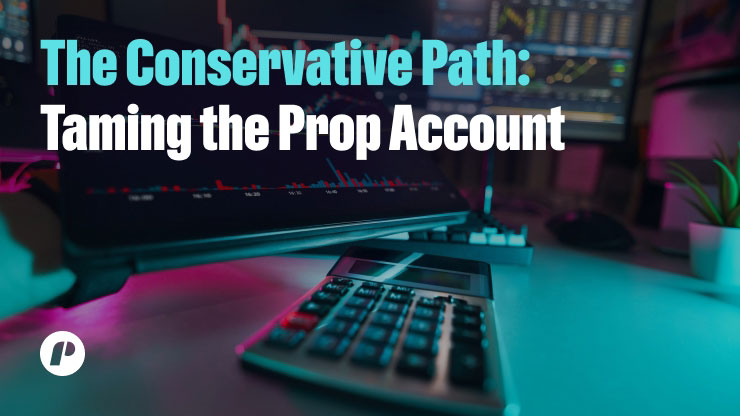
The Conservative Path: Taming the Prop Account
Picture, for example, two traders, Elias and Vivian, each armed with $50,000 in funded capital. Elias, in this case, is a rock, a disciple of precision. He trades with the restraint of a sage, honoring every risk parameter to the decimal. As a result, his buying power is his allocation—nothing more, nothing less. Elias, therefore, embodies the disciplined trader, never overstepping, never breaching the firm’s drawdown threshold, and never losing his grip. For this reason, his gains may be modest, but his path is steady —a quiet crescendo; indeed, prop trading crowns such restraint. While the returns start small, the trust he builds with the firm is a treasure beyond gold.
Elias’s Strategy
Elias’s secret, moreover, is position sizing. Consequently, he commits only 10% of his buying power per trade—$5,000 per position—ensuring that no single loss can fatally wound his account. Furthermore, a biotech stock might tempt him, but he only enters after a confirmed trend, such as a moving average crossover or an earnings beat. This conservative dance, consequently, aligns with the firm’s risk management principles, thereby preserving its right to trade and scale. Thus, his trades, rooted in technical signals or fundamental shifts, wield his buying power with surgical grace. Ultimately, Elias is the tortoise, steady and sure, carving a legacy of trust.
The Constraint of Risk Limits
Unlike retail traders who are often hindered by settlement delays, prop traders face internal walls. For this reason, every funded account is subject to daily loss caps, maximum exposure thresholds, and position size limits. Consequently, these rules carve the boundaries of your buying power, dictating how much you can wield in a single trade or across a portfolio. They’re not shackles but sentinels; as a result, they are guarding traders and firms from ruinous cascades. For Elias, therefore, honoring these limits is a sacred act of longevity. Ultimately, adapting within these bounds ensures he never crosses the daily loss line or forfeits the firm’s capital.
Understanding and Adhering to Limits
These limits, however, vary by firm. For instance, one might set a 5% daily loss cap—$2,500 on a $50,000 account—while another permits a 10% drawdown before intervention. Moreover, position size rules might cap exposure at 20% of buying power per trade. Breaching these triggers, as a result, activates automated systems—cold, unyielding guardians—that pause trading or reduce buying power until the balance is restored. Some firms, furthermore, demand weekly profit consistency, while others require monthly loss reviews. Therefore, understanding these rules is your map through the market’s labyrinth, keeping your capital’s flame burning bright.
The Amplified Life: Scaling the Heights of Buying Power
Vivian, on the other hand, dances on ambition’s edge. She knows, moreover, that consistency unlocks prop trading’s vault. For example, after a string of disciplined, risk-adjusted wins—such as 12% returns over 30 days with losses below 4%—her firm scales her account from $50,000 to $100,000, which effectively doubles her buying power. This isn’t borrowed coin—instead, it’s trust forged in the fire of her performance. Consequently, the firm recognizes her precision and mastery, granting her a broader scope of responsibility. This amplified buying power enables her to take larger positions, pursue broader strategies, and navigate market waves with newfound agility. Ultimately, scaling is the heartbeat of prop trading, transforming skill into capital’s radiant might.
Proof and Discipline
Scaling, therefore, demands proof. For instance, a firm might require 10% returns over 30 days, with drawdowns of less than 10% of capital. Furthermore, some add consistency clauses—no single loss exceeding 3%—or mandate diversified trades across sectors. Vivian’s triumph demonstrates how buying power increases with performance, transforming a modest allocation into a formidable force. Her doubled capacity, consequently, lets her diversify—stocks, ETFs, even cautious options plays—while staying within the firm’s sacred boundaries. This expansion fuels her ambition, but demands unrelenting discipline to sustain.

The Discipline of Risk: The Firm’s Iron Sentinels
In prop trading, power and protection are entwined like vines; therefore, if you breach a daily loss limit or hit the maximum drawdown, the firm’s systems strike—positions close, trading halts, capital shields rise without mercy. This isn’t cruelty; on the contrary, it’s architecture, preserving trader and firm alike. For Vivian, for example, these sentinels remind her that buying power is a form of stewardship, not ownership. It endures, consequently, only as long as discipline holds. Therefore, every trade must bow to the capital’s limits; likewise, every position must pulse with controlled intent.
Automated Protections
These protections are, furthermore, tailored to each individual’s specific needs. For example, a $50,000 account might carry a $2,500 daily loss limit and a $5,000 maximum drawdown. If you cross these automated closures, buying power is slashed until recovery is proven. Some firms, on the other hand, tighten the leash with 3% daily limits, while others allow 12% drawdowns for aggressive traders. Exceeding these triggers, therefore, a pause, perhaps a week’s restriction, until the trader proves stability. These systems, consequently, ensure buying power remains a blade for opportunity, not a torch for ruin. Ultimately, Vivian’s vigilance, tracking exposure like a hawk, keeps her capital alive.
The High-Speed Arena: Wielding Dynamic Buying Power
Prop traders, as a result, roam free of retail chains—that is to say, no minimum balances and no external regulators. Your trading tempo, furthermore, hinges on the firm’s internal laws and your performance. If you prove your precision, the firm may grant intraday buying power surges—up to four times your base allocation—for high-octane sessions. This isn’t a right but a reward; consequently, it’s earned through consistent mastery of risk. For instance, a trader with $50,000 might wield $200,000 intraday, pouncing on breakouts or reversals, provided they’ve proven their mettle.
Flexible Capital
This flexibility, in turn, allows prop traders to exploit fleeting price swings—a tech stock’s surge, a commodity’s dip—without overextending their core capital. Some firms, for example, tie intraday boosts to specific metrics, such as a 15% profit over 10 consecutive sessions. Others, however, cap surges at three times the allocation for volatile markets. The firm’s risk parameters, therefore, are ever-present, ensuring amplified buying power fuels profit, not peril. Vivian, for instance, with her scaled $100,000 account, might access $400,000 intraday, riding a market storm while staying within the firm’s ironclad limits.
The Strategic Edge: Mastering Buying Power’s Flame
Vivian’s amplified buying power is, therefore, her sword’s edge. For instance, with $100,000, she commits $20,000 to a trade, reaping a 10% gain—$2,000 profit, equivalent to a 20% return on her original $10,000 investment. This potency, consequently, stems from diversification—spanning stocks, ETFs, and cautious futures—while adhering to position size limits. Unlike retail traders, she faces no settlement delays; as a result, she reinvests profits instantly within the firm’s risk framework. This fluidity, therefore, allows her to pivot—a biotech rally, a retail stock’s collapse—maximizing the reach of her buying power.
The Importance of Balance
Strategy, however, demands balance. For example, Vivian allocates 50% to core positions, reserving the rest for market shocks, like a tech dip signaled by RSI divergence. Some firms, furthermore, cap single-trade exposure at 15%, while others cap it at 25%, ensuring diversified risk. Her trades, as a result, are timed with precision—entering on confirmed candlestick patterns—keep her capital fluid and her potential alive. This dance of aggression and restraint, therefore, is the art of the prop trader, turning buying power into a lever for wealth. Conversely, a single misstep, like over-allocating to a volatile stock, risks triggering the firm’s sentinels, shrinking her battlefield.
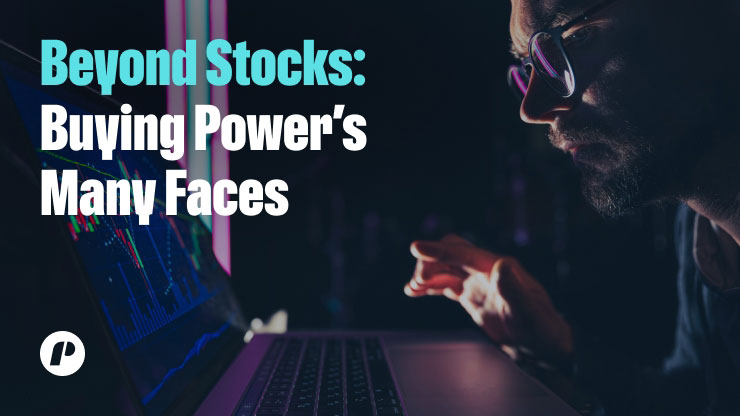
Beyond Stocks: Buying Power’s Many Faces
Buying power, as a result, bends to the asset’s soul, a chameleon in the market’s chaos. For instance, options trading demands caution—consequently, prop firms may allocate only 10% of buying power per covered call, while naked puts devour 20% to cover boundless risk. Futures are wilder; therefore, firms cap exposure at 5–10% of buying power due to their volatility. For example, a $100,000 account might allocate $10,000 to futures, with position limits in place to tame their volatility. Some firms, furthermore, require futures traders to maintain 80% of capital unallocated, ensuring stability.
Adapting to Asset-Specific Rules
Short selling, conversely, carves a unique path. For instance, when Vivian shorts $10,000 in stock, the firm reserves $15,000 of buying power to shield against price spikes, consequently shrinking her available capital. Some firms, furthermore, require 200% reserves for volatile shorts, while others demand 150% for stable stocks. These asset-specific rules, as a result, force traders to adapt, balancing high-reward plays with the firm’s unyielding constraints. Options, futures, shorts—each, therefore, demands a tailored dance, wielding buying power with precision across the market’s many faces.
Buying Power: The Weight of Uncommitted Capital
Buying power in prop trading, therefore, is the ultimate hymn to financial freedom. For the patient trader, it’s, as a result, the comfort of unspent capital, the dry powder for a generational opportunity. Consequently, it’s the strength to face a market crash, seizing value without sacrificing sound holdings. For the active trader, on the other hand, it’s the raw measure of their battlefield—quantified, relentless, and alive. Managed with reverence for the firm’s risk laws and performance tests, it’s the key to swift wealth. But abused, chased with reckless hunger, it morphs into ruin’s accelerant. Therefore, buying power demands study, vigilance, and respect. Ultimately, it is the essence of a trader’s might in the market’s dazzling, unforgiving arena.
If you liked this post make sure to share it!

